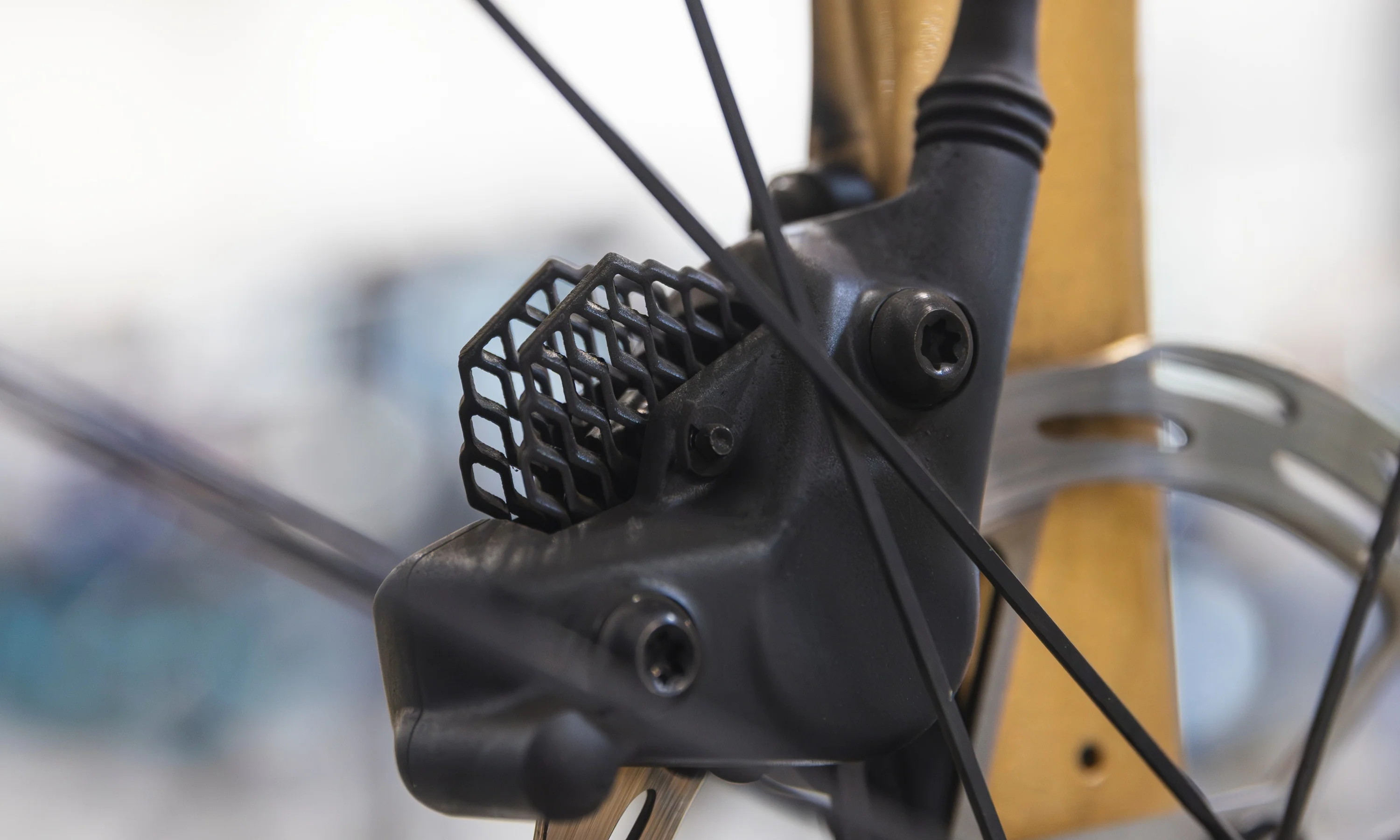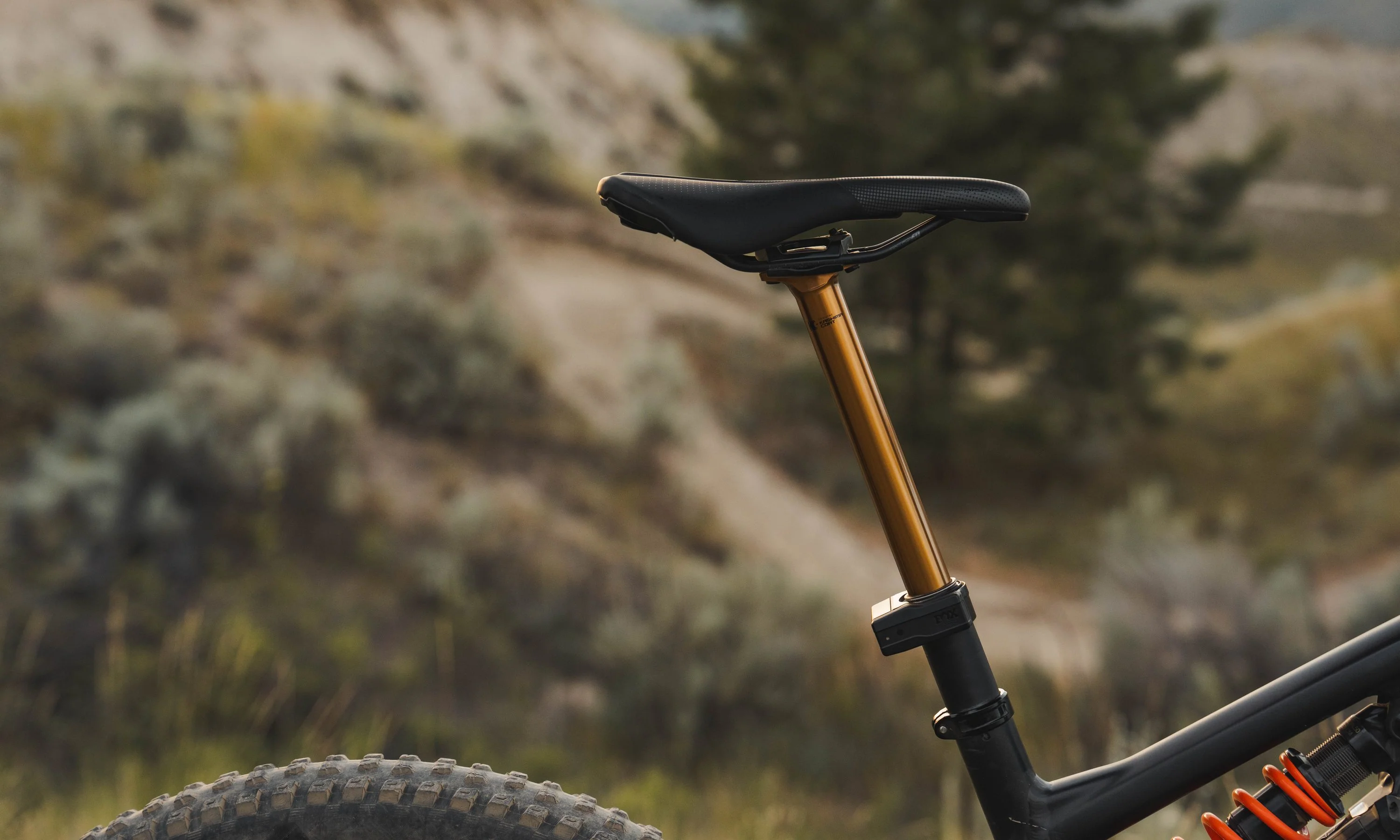Riders at TPC treat my bikes like lepers. Whenever my “friends” ask to try my bike during a ride, they always return it in disgust. I’ve gotten confused looks. I’ve been mocked. Once, a shuttle driver in Moab handed me my bike and just said, “I don’t like it.” What did I do to deserve this?
I run my brakes backwards.
[button]Shop Bikes[/button]
If you ride bikes anywhere that people drive on the right side of the road (most of the world), then you probably grew up with a "standard" brake set-up — your right-hand controls the rear brake and your left-hand controls the front brake. My bikes are different. They're set-up with the right-hand controlling the front brake and left controlling the rear.
But which hand should control the front brake? And why do I choose this set-up?

The front brake is the most important because, under braking forces, the front tire has more traction and provides the majority of your stopping power. This is because your weight shifts forward as you decelerate. Under hard braking, the rear may even lift off the ground. Excessive rear brake will just cause you to skid.
Like most people, I’m right-handed (sorry lefties, I have no advice for you). So my right hand has way more power and much finer motor control over the brake lever. I find applying the front brake with my right-hand lets me stop harder and more consistently. It’s easier to modulate the brake to prevent sliding out, especially on steep terrain, when initiating a turn, or when traction is bad. I can brake later, brake deeper into corners while trail-braking, and feather the brake better.
The rear brake is more useful for tightening up your line mid-corner, slowing down on slippery surfaces (like snow and ice), controlling wheelies, and throwing skids. For this purpose, my clumsier left-hand does fine.
[newsletter]
Just look at motorcycles. Compared to bicycles, they weigh a lot more and travel at much greater speeds. A motorcycle is essentially a death trap, so good braking is a must. Which hand do you think controls the front brake on a moto? The right hand! This is why you hear people refer to reversed brakes as “moto-style.”
If you think I’m crazy, the godfather of bicycle maintenance, Sheldon Brown, agrees with me in “Braking and Turning Your Bicycle.” Sheldon not only explains his reasons for running reversed brakes, but he also provides lots of insight on how to properly use both of your brakes in different situations. Far too many riders are afraid of using the front brake. To maximize your riding potential, you must embrace the front brake — and I think it's best to embrace it with your right hand.
Fortunately, I’m not completely alone. My good friend and competitor, Tom Gosselin, is my one and only ally. He’s a legit bike racer who specializes in (and occasionally wins) cyclocross races and 24-hour endurance races. I asked him why he reverses his brakes.
 Feathering the rear brake. Tom goes fast on a reversed brake set-up.
Feathering the rear brake. Tom goes fast on a reversed brake set-up.
“I initially switched because of cyclocross,” he says. “Old school cyclocrossers ran the brakes reversed so you could feather the rear brake to scrub speed as you came into a barrier while holding the top tube with your right-hand (assuming you dismounted on the non-drive side).
“The first few seasons after I switched, I'd spend the first couple of weeks getting used to it. As my career progressed, I swapped all my bikes to mirror that set-up. I realized in crits that it would allow me to once again feather the rear brake, this time while downshifting the rear cogs, allowing me to easily exit the turn in the correct gear if we were subject to the ‘slinky effect.’”
It might not sound like much, but in high-level bike racing, marginal gains are as good as gold. Tom discovered a slight benefit to switching his brakes, and he takes full advantage.
 Braking in loose and difficult conditions.
Braking in loose and difficult conditions.
I am not a legit racer. I'm an amateur and I’m rarely at the sharp end of any group ride at TPC. Even so, I think my set-up gives me a slight braking advantage over my more doubtful peers. Braking later and harder has allowed me to close gaps and keep up, despite lacking other skills and fitness.
Okay, so if you've read this far and you still don't believe me, Tom, or even Sheldon Brown, consider this. Greg Minnaar and Sam Hill have dominated the world of downhill mountain bike racing with reversed braking set-ups (they come from countries that drive on the left — to them it's normal).
And for the roadies, my favorite pro from down under, Lachlan Morton, does it. The legendary Davis Phinney did it.
Admit it, with an all-star line up like that, you're at least a little curious to try switching the brake levers on your bike.
Give it a shot! Anyone with a sliver of mechanical know-how can reverse their brakes. SRAM MTB brakes are easy — just take off the bar clamps and flip them. Rim brakes and mechanical disc brakes don't present too much of a challenge. Other hydraulic disc brakes will probably require a bleed after swapping lines, but that should be part of your regular maintenance schedule anyway.
If you’re worried about crashing after reversing your brakes, relax. I regularly test-ride bikes, and they always have standard brake-lever configurations, so I’m forced to switch. You just have to be aware and take things slow. Know how to brake properly. By gradually applying pressure and maintaining a strong braking position, you won’t go over the bars. I can usually make the mental switch after a ride or two.
Even though I'm flexible, I always default back to a reversed set-up on my personal bikes. It just works for me. It feels like home. Plus, it's actually kind of nice when none of my friends dare ride my bikes. And sometimes it just feels cool to be weird and different.
[button]Shop Bikes[/button]

























